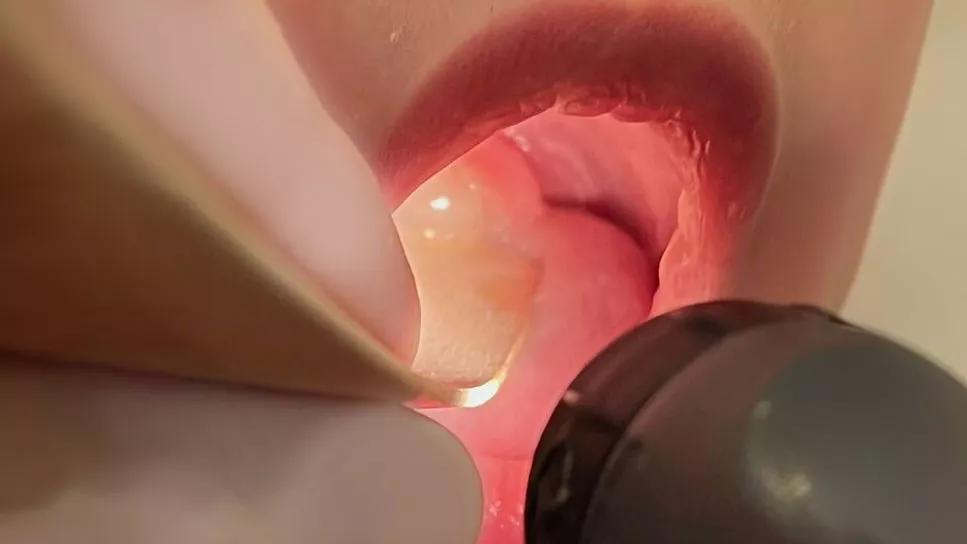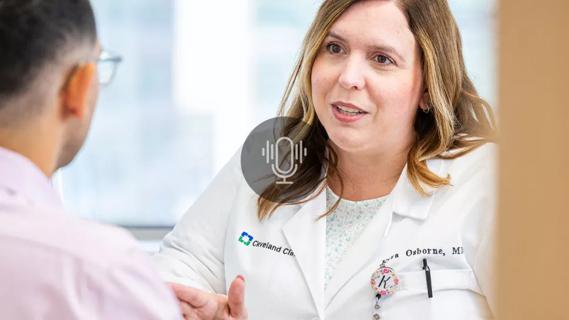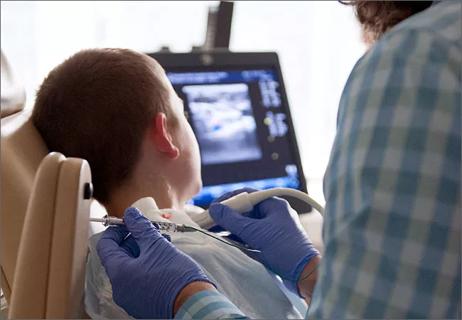Prompt surgery was necessary when symptoms drastically increased

An 18-month-old patient presented with persistent ear infections but did not have any noticeable upper airway or oral symptoms. The patient was originally seen by W. Kyle Mudd, DO, a pediatrician at Cleveland Clinic, who referred him to his colleague, Mingsi Li, MD, a comprehensive otolaryngologist, to determine if the patient would be a good candidate for ear tubes.
Advertisement
Cleveland Clinic is a non-profit academic medical center. Advertising on our site helps support our mission. We do not endorse non-Cleveland Clinic products or services. Policy
During the general head and neck exam, a uvular cyst was identified. The patient’s parents also confirmed that he snores at night and his breathing sounds obstructed when he’s sleeping on his back. Dr. Li referred him to Brandon Hopkins, MD, pediatric otolaryngologist and Surgical Director of the Pediatric Center for Airway Voice and Swallowing Disorders at Cleveland Clinic. In between the referrals, the patient also saw Dr. Mudd again to make sure the patient was safe and still healthy.
Dr. Hopkins noted the uvular cyst observed by Dr. Li. Since the patient was still growing well and otherwise healthy, it was determined that this wasn’t an urgent situation where the patient needed to go to the operating room (OR) immediately. After consulting with the parents, a surgery was scheduled electively.
However, one month after seeing Dr. Hopkins, the family brought the patient back in to see his nurse practitioner due to his snoring and obstruction issues worsening.
The patient was added to the OR docket for that afternoon. At that time, Dr. Hopkins placed tubes in the patient’s ears and worked with the anesthesia team to make sure it was safe to intubate. It was determined that it was, and the cyst was excised and sent to the pathology lab. It was determined that the cyst was a benign epithelial cyst.
Six weeks later, Dr. Hopkins saw the patient for a follow-up appointment to make sure that his ears and mouth were still doing well.
“On face value, this case wasn’t one of our more remarkable ones in terms of complexity or rarity, but I think it still drives home the importance of being agile and being able to react quickly when something changes,” says Dr. Hopkins. “This was also a case that highlighted the importance of multidisciplinary collaboration and maintaining strong communication since all three levels of our otolaryngology services, along with anesthesia, were involved here.”
Advertisement
One of the biggest challenges of this case, notes Dr. Hopkins, was coordinating with the anesthesia team in the OR since the patient was so young. “When you’re dealing with a mass in the upper airway tract, there’s always a bit of an unknown,” says Dr. Hopkins. “We certainly expect things to react a certain way when you give a child an anesthetic, but because the oral space is so small, you have to be prepared to manage their airway more acutely. This patient was easily maskable though, and the anesthesia team put the breathing tube in. Then, the approach was very similar to what we would do for a tonsillectomy or adenoidectomy.”
Dr. Hopkins also says one of the more difficult things that Cleveland Clinic is good at is matching the severity of illness with OR availability. Because resources and personnel can be limited, surgeons must be able to triage cases to a lower tier when necessary. However, communication with the patient and the family is essential to make sure they understand the reasoning behind triaging and to ensure they are vocal if things change — like they did in this case.
“In a perfect world, we would have been able to have this patient come into the OR the day after I met with the family. But, unfortunately, we can’t always do that. In this case, we spoke with the family and reassured them about where things stood and our thought process behind waiting — he was still feeding well and his growth trajectory hadn’t changed — and they were on board. However, things changed over the next couple of weeks when the snoring and upper airway obstruction increased. I think our reaction to that change in severity was appropriate. We were able to see them urgently, reevaluate the situation, and the patient was in the operating room later that day.”
Advertisement
Advertisement

Surprising X-ray results explain a snoring sound heard during breathing

With a wide scope of skills, comprehensive otolaryngologists care for patients of all ages in the community

Evidence-based recommendations for balancing cancer control with quality of life

Specialists are increasingly relying on otolaryngologists for evaluation and treatment of the complex condition

Screening also found to be cost-effective

Research aims to better understand the tumor immune micorenvironment

Use of MRI adds to cost but remains cost-effective due to higher sensitivity

Multidisciplinary team coordinates, adds efficiencies to care